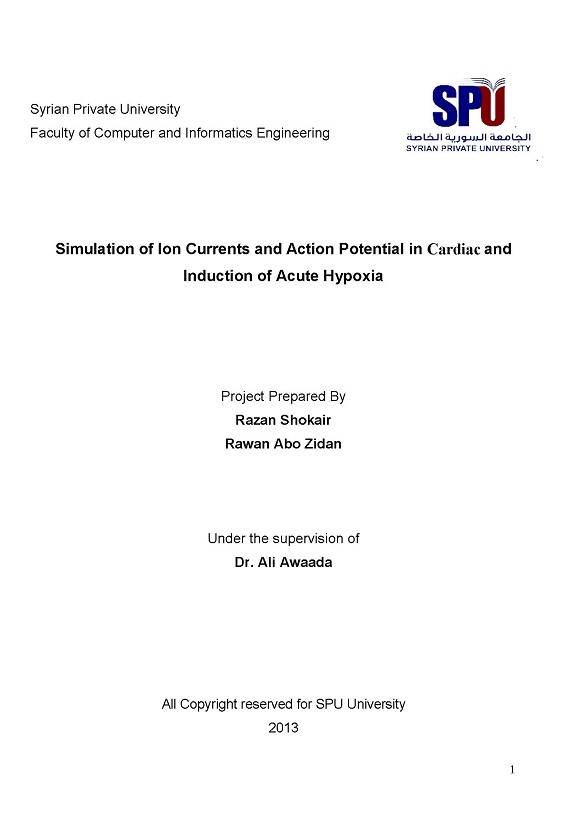
Abstract
Sudden cardiac death describes the unexpected natural death from a cardiac cause within a short time period, generally ≤1 hour from the onset of symptoms, in a person without any prior condition that would appear fatal.
This study describes a computer model of electrical propagation in a cardiac in order to investigate the factors affecting the cardiac activity. The basic elements of this model are a set of identical excitable cables connected together and a dynamic representation of the cardiac cellular membrane. The membrane model incorporates ionic components of the cardiac cells which include fast sodium current, a slow inward current, a set of potassium currents and a membrane capacitance. The intracellular calcium concentration increases as a function of the calcium membrane current at the onset of the action potential and returns to its resting level at the end of repolarization phase. The gating model describes the non-linear currents of the membrane model. The formulation of these currents follows the Hodgkin-Huxley type model and we investigated the net effects of acute hypoxia and catecholamine’s on the cardiac action potential. Variability in delivery of oxygen can lead to electric instability in the myocardium and the generation of arrhythmias. In addition ischemic heart disease, angina and sudden cardiac death
Syrian Private University - Faculty of of Computer and Information Engineering @ 2024 by Syrian Monster - Web Service Provider | All Rights Reserved